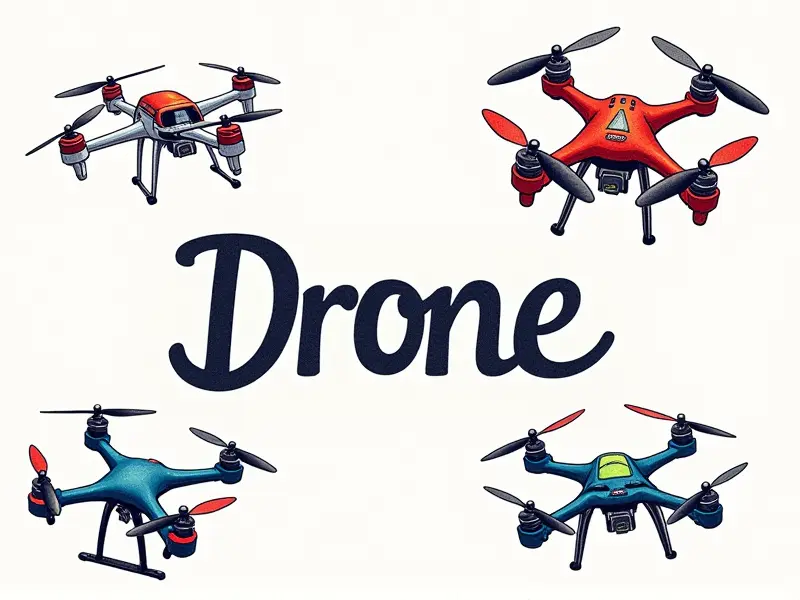Are drones safe around airports?

Drone Safety Zones Around Airports
The use of drones near airports has become a contentious issue due to the potential risks they pose. To ensure safety, specific drone safety zones have been established around airports. These zones are designed to prevent unauthorized drone flights that could interfere with aircraft operations and compromise public safety.
Establishing Drone Safety Zones
- No-Fly Zones: Areas within a certain radius of an airport where drones are strictly prohibited.
- Restricted Flight Zones: Permitted areas with strict altitude and distance limitations to avoid interfering with aircraft.
Risks of Drones Around Airports Revealed
The risks associated with drone flights near airports include the potential for collisions, disruption of air traffic control operations, and interference with emergency services. These risks can lead to significant safety hazards and operational disruptions.
Potential Collision Hazards
- Aircraft Damage: Drones can cause severe damage to aircraft engines or other critical components if a collision occurs.
- Injury to Passengers & Crew: In-flight collisions could result in injuries to passengers and crew members onboard the affected aircraft.
Disruption of Air Traffic Control Operations
- Airspace Interference: Drones can interfere with radar systems, causing false signals that disrupt air traffic control operations.
- Flight Delays & Cancellations: The presence of unauthorized drones may necessitate the rerouting or cancellation of flights to ensure safety.
Legal & Safety Tips for Airport Drones
To mitigate risks and comply with regulations, drone operators must adhere to legal guidelines and follow best practices. This includes obtaining necessary permits, flying within designated zones, and maintaining situational awareness.
Necessary Permits & Licenses
- FAA Registration: All drones weighing over 0.55 pounds must be registered with the FAA.
- Pilot Certification: Operators may need to obtain a Remote Pilot Certificate from the FAA for certain types of flights.
Flying Within Designated Zones
- No-Fly Zone Compliance: Avoid flying drones in no-fly zones around airports and other restricted areas.
- Restricted Flight Zone Operations: Follow altitude and distance limitations within permitted flight zones.
FAA Rules for Drones Near Airports
The FAA has implemented specific rules to regulate drone operations near airports. These regulations aim to ensure the safe integration of drones into the national airspace system while minimizing risks to aviation safety.
No-Fly Zones & Restricted Areas
- Prohibited Airspace: Drones are not allowed within a 5-mile radius of any airport without explicit permission from air traffic control.
- Restricted Flight Zones: Permitted areas with strict altitude and distance limitations to avoid interfering with aircraft operations.
Altitude & Distance Limitations
- Maximum Altitude: Drones must not exceed 400 feet above ground level in most cases.
- Minimum Distance: Maintain a safe distance from aircraft and other airspace users to avoid collisions.
Impact of Drones on Airport Security
The presence of drones near airports can have significant implications for airport security. Unauthorized drone flights may pose threats to critical infrastructure, disrupt operations, and compromise the safety of passengers and staff.
Threats to Critical Infrastructure
- Security Breaches: Drones could be used to capture images or videos of sensitive areas within airports.
- Physical Interference: Unauthorized drones may interfere with security systems and disrupt emergency response efforts.
Disruption of Airport Operations
- Airspace Congestion: The presence of unauthorized drones can lead to airspace congestion, causing delays and cancellations.
- Increased Security Measures: Airports may need to implement additional security measures to counteract the threat posed by unauthorized drone flights.
Why Flying Drones Near Airports is Risky
Flying drones near airports poses significant risks due to the potential for collisions, interference with air traffic control operations, and disruption of emergency services. These factors underscore the importance of adhering to regulatory guidelines and best practices.
Potential Collision Risks
- Engine Damage: Drones can cause severe damage to aircraft engines if a collision occurs.
- Injury to Passengers & Crew: In-flight collisions could result in injuries to passengers and crew members onboard the affected aircraft.
Interference with Air Traffic Control Operations
- Airspace Interference: Drones can interfere with radar systems, causing false signals that disrupt air traffic control operations.
- Flight Delays & Cancellations: The presence of unauthorized drones may necessitate the rerouting or cancellation of flights to ensure safety.
Drone Regulations at Airports 2025
In 2025, drone regulations around airports are becoming increasingly stringent. New rules and guidelines have been introduced to enhance safety and security while allowing for responsible use of drones in the vicinity of airfields.
New Rules & Guidelines
- Enhanced Registration Requirements: More rigorous registration processes for drone operators.
- Increased Penalties for Violations: Stricter penalties for unauthorized flights near airports.
Compliance with Regulations
- Operator Training: Mandatory training programs for drone pilots to ensure compliance with safety standards.
- Technology Integration: Implementation of advanced technologies such as geofencing and real-time tracking systems.
Protecting Skies from Unauthorized Drones
To safeguard airspace around airports, various measures are being implemented to detect and mitigate unauthorized drone flights. These include the use of detection systems, enforcement actions, and public awareness campaigns.
Detection Systems
- Radar & Sonar: Advanced radar and sonar systems can help identify unauthorized drones in real-time.
- Satellite Tracking: Satellite-based tracking technologies provide accurate location data for monitoring drone flights.
Enforcement Actions
- Fine Impositions: Penalties and fines are imposed on individuals caught flying drones in restricted airspace.
- Criminal Prosecution: Criminal charges may be filed against repeat offenders to deter unauthorized flights.
Conclusion
The safe integration of drones into the national airspace system near airports requires adherence to regulatory guidelines and best practices. By following these rules, drone operators can contribute to aviation safety while enjoying responsible use of this innovative technology.

